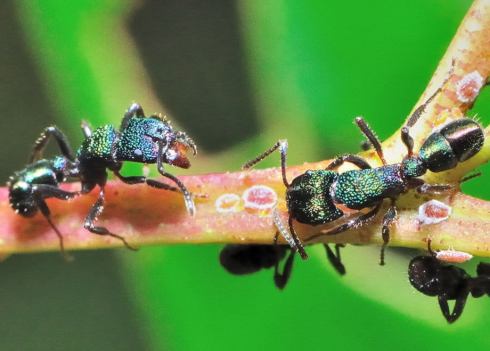
Photo credit: http://www.brisbaneinsects.com
The Green-headed ants (not to be confused with the Green Tree Ant-Oecophylla smaragdina) although beautiful close up, are not a lot of fun for people like me. I’m allergic to all sorts of things from antibiotics, to some plants, to apparently ant bites! Although I don’t get full anaphylaxis with ant bites (like I do with antibiotics), I do react to them more than the average person. Especially these guys.
I’ve been bitten on three different occasions by them, and every time a tiny little bite turns into a huge, swollen ordeal.
This time, while walking through the front yard, I got two bites on my foot. One I actually felt, and when I looked down an ant was in another spot on my foot still biting.

So, I decided to investigate what it is about these guys that make me react so badly to them.
First of all, these ants don’t actually cause reaction from their bite. They have a stinger in their abdomen, which injects a
venom. Most of what I read, aside from the Queensland Museum site, made the effects from the sting seem very benign, with reaction lasting at most a day. My foot was swollen for at least 3 days, and even now (9 days later) it still itches near the stings.
The pain I would liken to a shot from a needle, than a burning sensation. It feels similar to a bee sting. After that, it’s painful with the swelling, feels very hot, and the true itching starts when the healing starts… and boy is it bad.
So, what in the venom causes all of this drama? Formic acid-a naturally occuring organic acid used in many applications. But most notably, the main ingredient in ant venom. 🐜
These ants are common in yards,
so (needless to say) I’m going to be a lot more careful going shoeless, or sitting, in the grass from now on.




